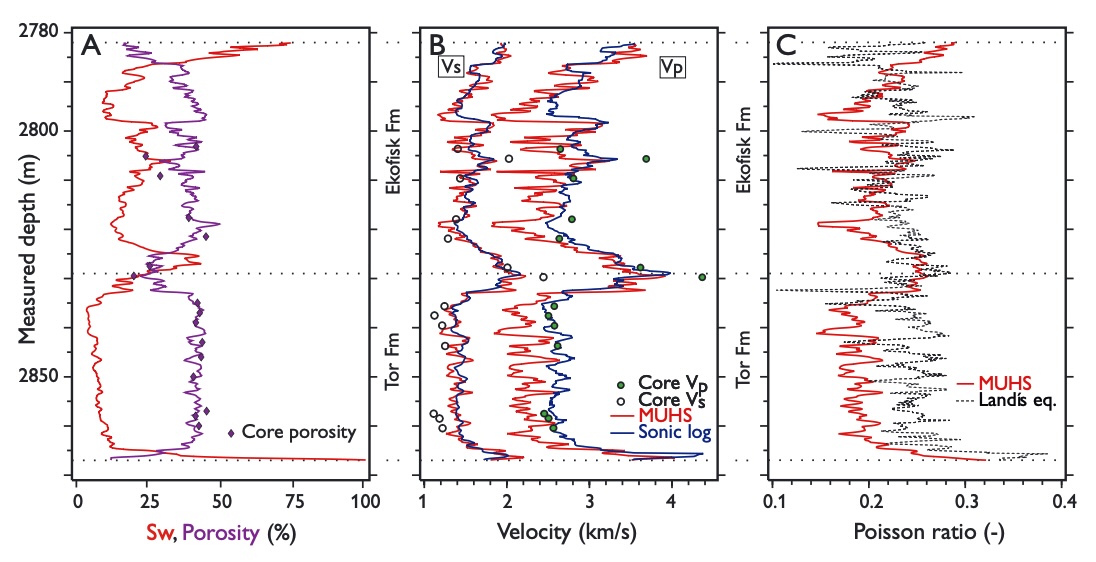
How to Cite
Share
Abstract
Seismic data are mainly used to map out structures in the subsurface, but are also increasingly used to detect differences in porosity and in the fluids that occupy the pore space in sedimentary rocks. Hydrocarbons are generally lighter than brine, and the bulk density and sonic velocity (speed of pressure waves or P-wave velocity) of hydrocarbon-bearing sedimentary rocks are therefore reduced compared to non-reservoir rocks. However, sound is transmitted in different wave forms through the rock, and the shear velocity (speed of shear waves or S-wave velocity) is hardly affected by the density of the pore fluid. In order to detect the presence of hydrocarbons from seismic data, it is thus necessary to investigate how porosity and pore fluids affect the acoustic properties of a sedimentary rock. Much previous research has focused on describing such effects in sandstone (see Mavko et al. 1998), and only in recent years have corresponding studies on the rock physics of chalk appeared (e.g. Walls et al. 1998; Røgen 2002; Fabricius 2003; Gommesen 2003; Japsen et al. 2004). In the North Sea, chalk of the Danian Ekofisk Formation and the Maastrichtian Tor Formation are important reservoir rocks. More information could no doubt be extracted from seismic data if the fundamental physical properties of chalk were better understood. The presence of gas in chalk is known to cause a phase reversal in the seismic signal (Megson 1992), but the presence of oil in chalk has only recently been demonstrated to have an effect on surface seismic data (Japsen et al. 2004). The need for a better link between chalk reservoir parameters and geophysical observations has, however, strongly increased since the discovery of the Halfdan field proved major reserves outside four-way dip closures (Jacobsen et al. 1999; Vejbæk & Kristensen 2000).
How to Cite
Share
Downloads
Editors: Martin Sønderholm & A.K. Higgins
The Review of Survey activities presents a selection of 18 papers reflecting the wide spectrum of activities of the Geological Survey of Denmark and Greenland, from the microbial to the plate tectonic level.
Activities in Denmark: The Survey's activities in Denmark are documented by 11 papers. The main themes [...]










